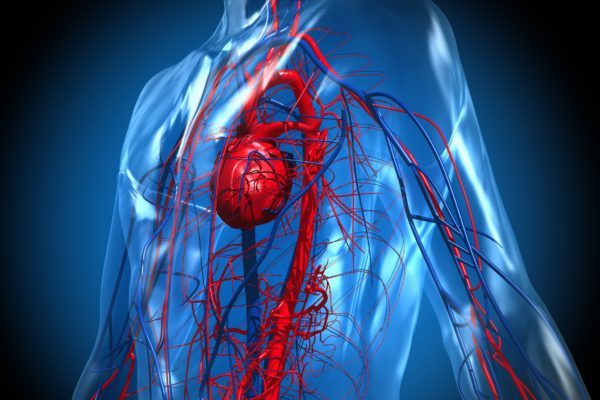Thrombotic thrombocytopenic purpura (TTP), or Moschcowitz disease, is a rare but severe disorder of the blood-clotting system, causing extensive microscopic blood clots in the small blood vessels, resulting in low platelet (thrombocyte) counts. Platelets are a component of the blood whose function is to initiate a blood clot after a blood vessel is damaged. Platelets express a coagulation factor called von Willebrand factor (vWF), which enables them to stick to the blood vessel and each other. The von Willebrand factor is cleaved in small pieces by a protein called ADAMTS13.
TTP is an autoimmune disorder, which means that the immune system produces antibodies against the body’s own substances. In TTP, the body produces antibodies against ADAMTS13, resulting in low levels of this cleavage protein. Without proper cleavage of vWF by ADAMTS13, blood clotting occurs at a higher rate, especially in the microvasculature (small blood vessels).
Blood clotting in thrombotic thrombocytopenic purpura results, on the one hand, in (subcutaneous) bleeding due to the coagulation disorder. On the other hand blood clots emerge, leading to a type of thrombosis. Hence the name thrombotic thrombocytopenic (= low blood platelet count) purpura (= small red and purple spot on the skin caused by minor bleed).
TTP is a rare disease; the exact prevalence is not clear. Studies cite incidences between 1 and 13 cases per million people depending on geographic location. TTP most often occurs in people between 20 and 40 years of age, but congenital forms can occur in children. TTP is more common in women, with a 2:1 female to male predominance.
Thrombotic thrombocytopenic purpura was first described in 1924 by Dr. Eli Moschcowitz. He described the disorder in a 16-year old girl, and attributed the symptoms, undeservedly, to poisoning.
Thrombotic thrombocytopenic purpura is difficult to diagnose because it is such a rare and little known disorder. Often the symptoms and complaint at onset are very general. If you have TTP, you might have these symptoms:
Untreated TTP can lead to disruption of the blood flow in the vessels. This can eventually result in kidney problems and neurological problems, such as:
As a result of the deficient blood circulation, the red blood cells may be damaged. This may lead to anaemia with the following symptoms:
The symptoms of TTP show resemblance to those of hemolytic uremic syndrome (HUS). HUS is syndrome characterized by acute (life-threatening) kidney failure. Unlike TTP, HUS causes no neurological symptoms.
The exact cause of thrombotic thrombocytopenic purpura is not known. Dependent on the cause, TTP can be classified as idiopathic or secondary (acquired). In rare cases TTP is hereditary; then a congenital mutation in the ADAMTS13 gene is the predominant cause.
Idiopathic TPP
Idiopathic means ‘arising spontaneously or of unknown cause’. Idiopathic TPP is an autoimmune disease caused by the inhibition of the enzyme ADAMTS13 by antibodies. The activity of ADAMTS13 is strongly reduced (5% of normal).
Secondary or acquired TTP
When the patients history mentions one of the known features associated with TTP, the diagnosis will be secondary TTP. In this form of TTP the activity of the enzyme ADAMTS13 is not repressed the way it is in the idiopathic form. A number of factors may influence TTP:
Hereditary TTP
The congenital form of TTP is also called Upshaw-Shulman syndrome, and is extremely rare. Due to mutations in the gene that codes for ADAMTS13, the body does not produce functional ADAMTS13 enzymes. Parents can pass this mutation on to their child. People with this inherited ADAMTS13 deficiency have a mild phenotype (mild symptoms) but develop symptoms in situations with increase von Willebrand factor levels such as infections.
Rapid diagnosis is very important. There are many causes of a low platelet count; extensive testing is necessary to exclude all other causes in the differential diagnosis. Most patients with TTP have a deficiency of the enzyme ADAMTS13. When the enzyme is completely absent, there’s no doubt the diagnosis is thrombotic thrombocytopenic purpura. A diagnosis may be made based upon a thorough clinical evaluation, a detailed patient history, and identification of characteristic findings:
Thrombotic thrombocytopenic purpura can be life-threatening. Immediate treatment is important. After rapid diagnosis, 85% of patients can be treated adequately and successful. In most cases therapy consists of:
When plasmapheresis is not effective, treatment options are:
Furthermore, research into targeted therapy for TTP is currently ongoing and could present new treatment options for TTP patients in the future.




